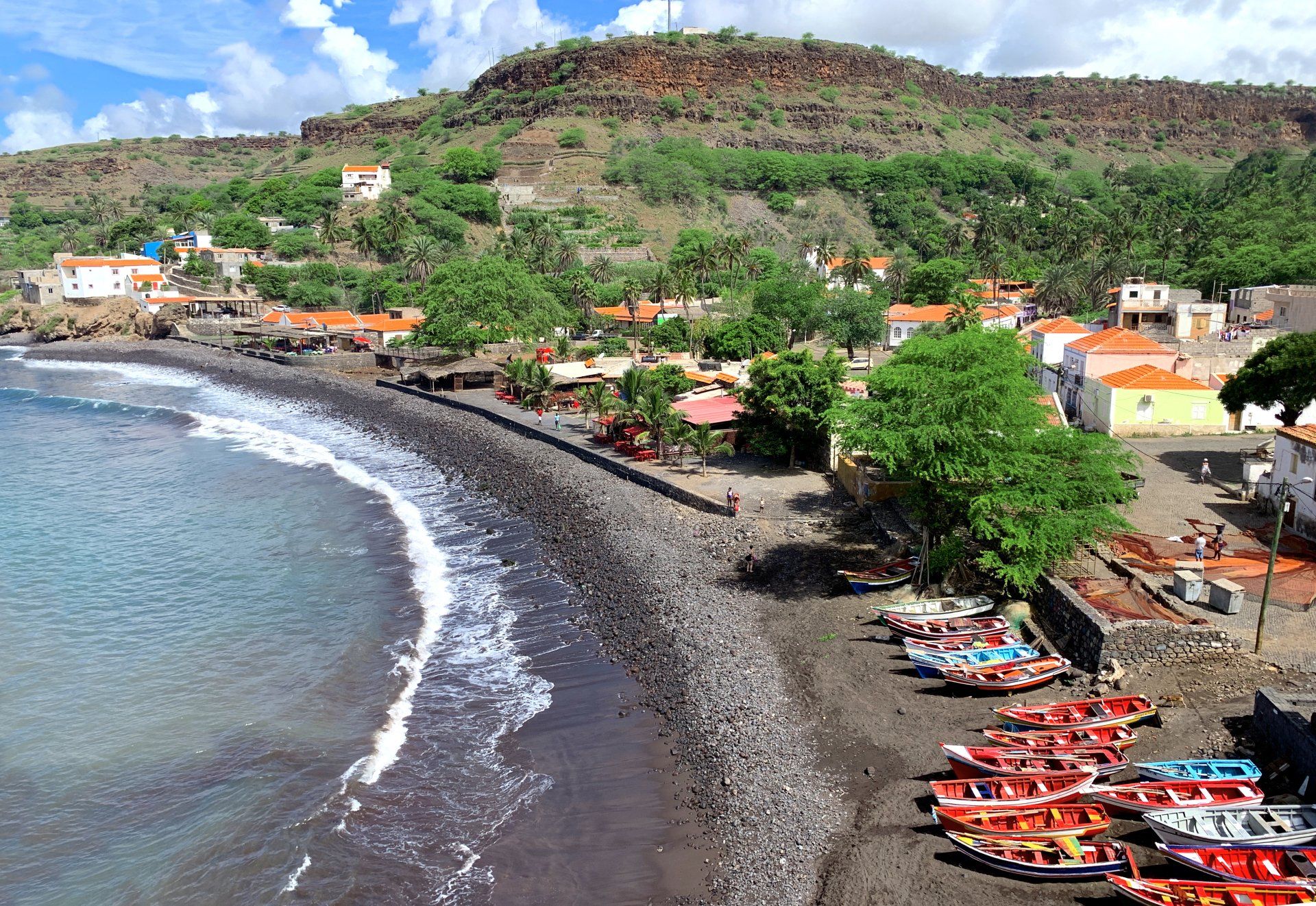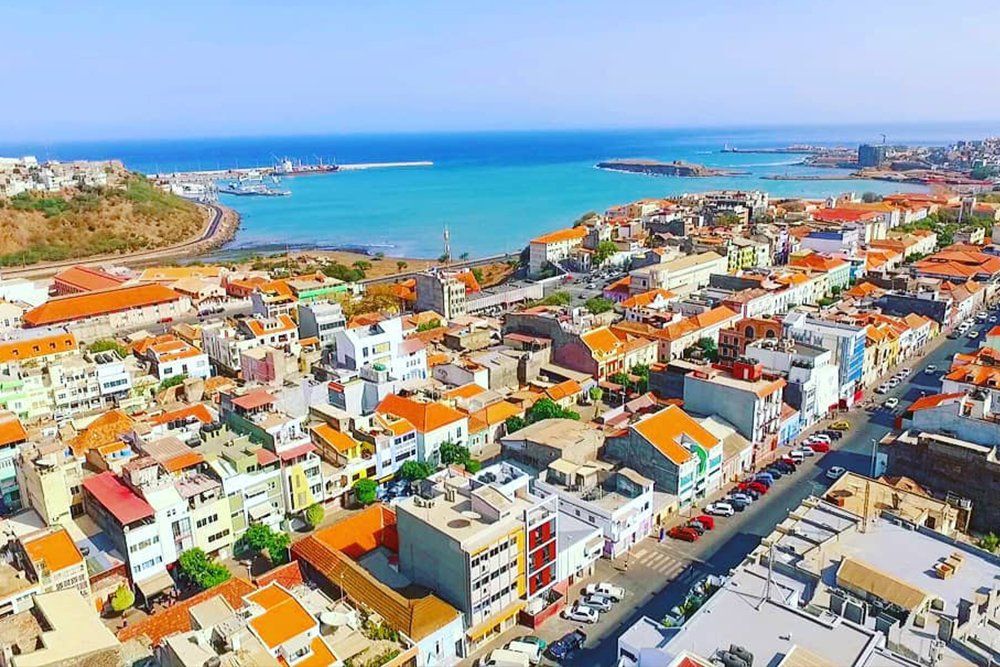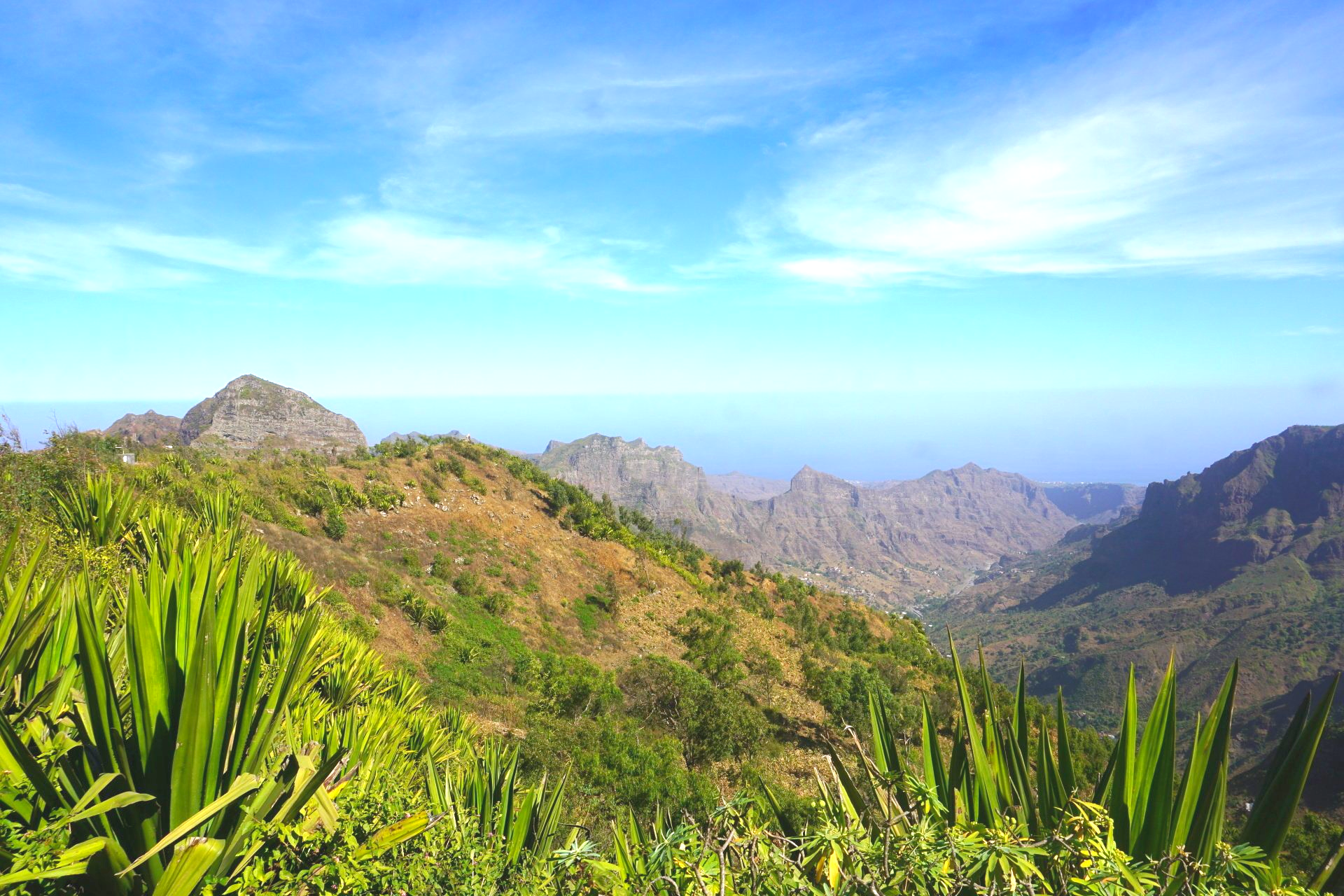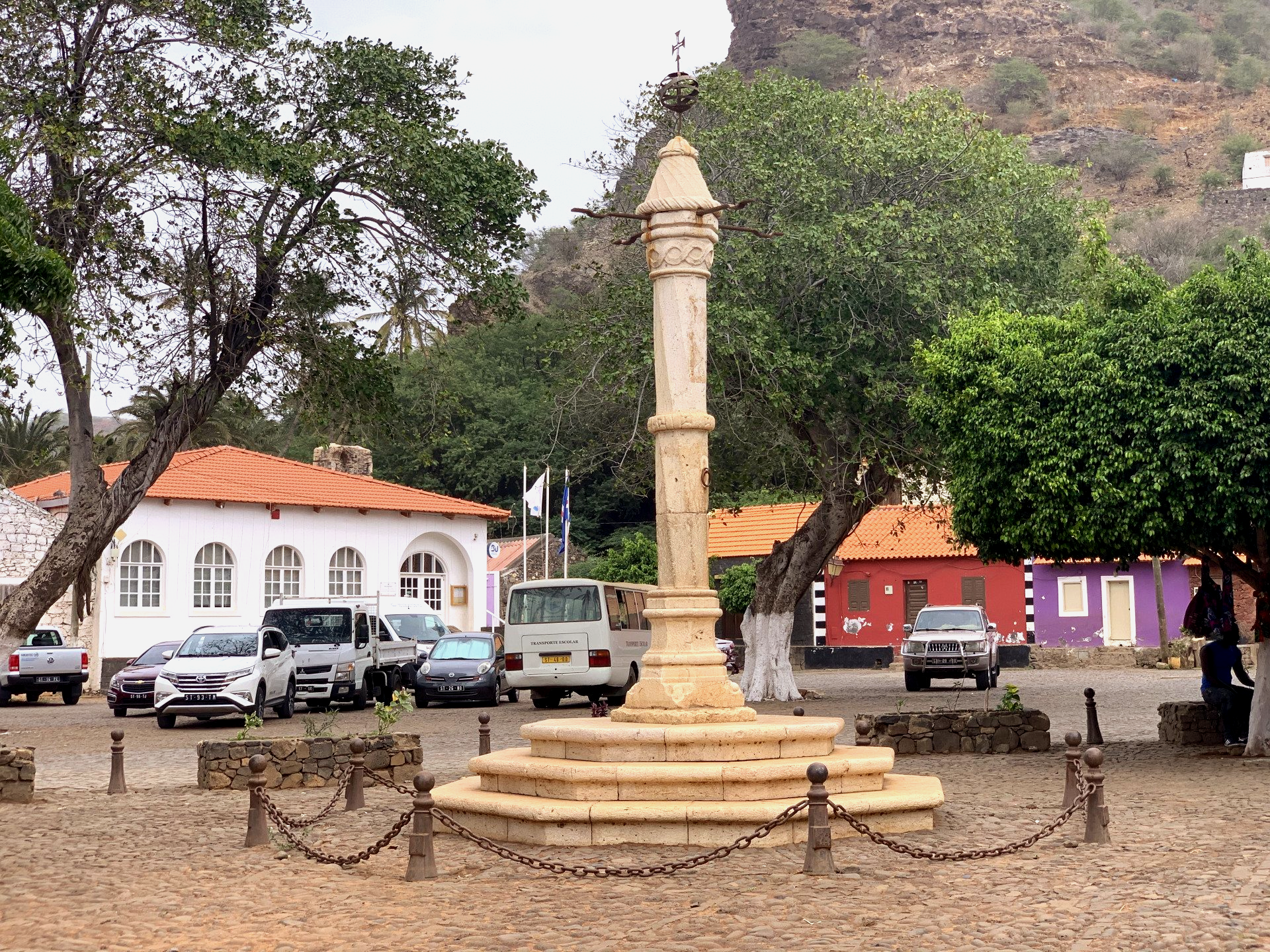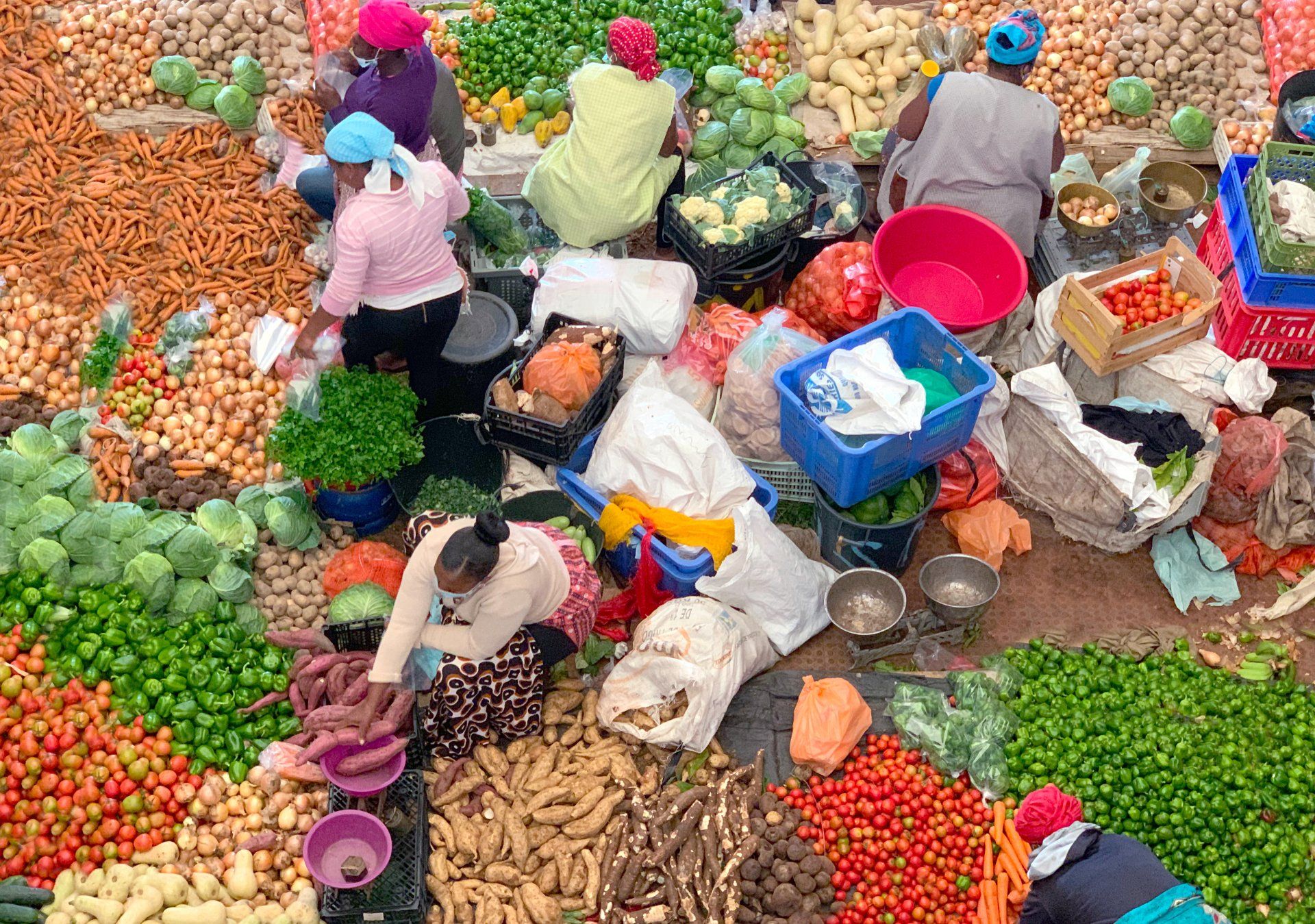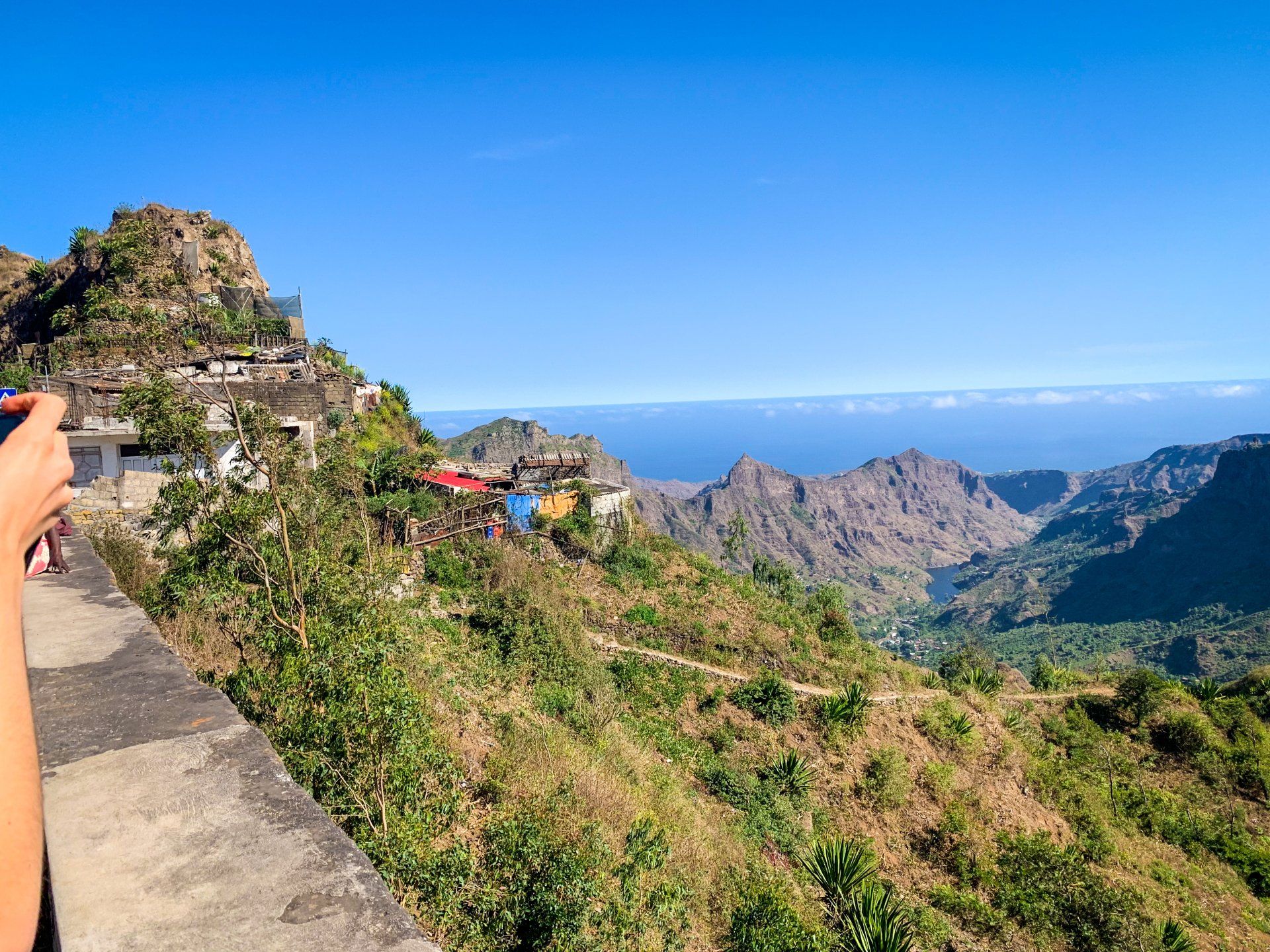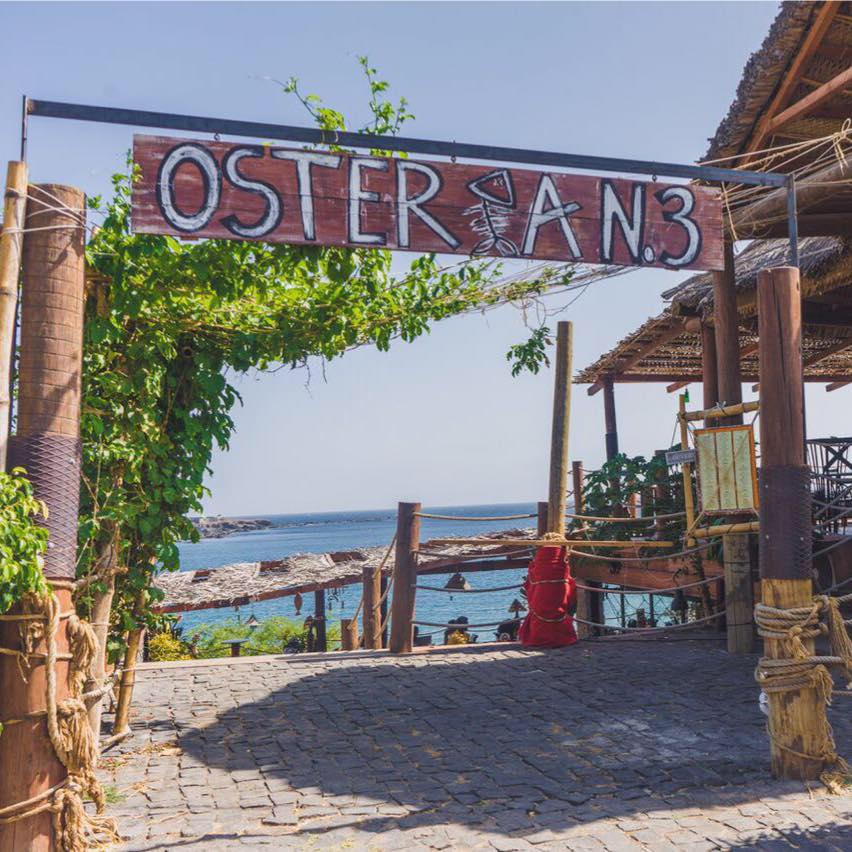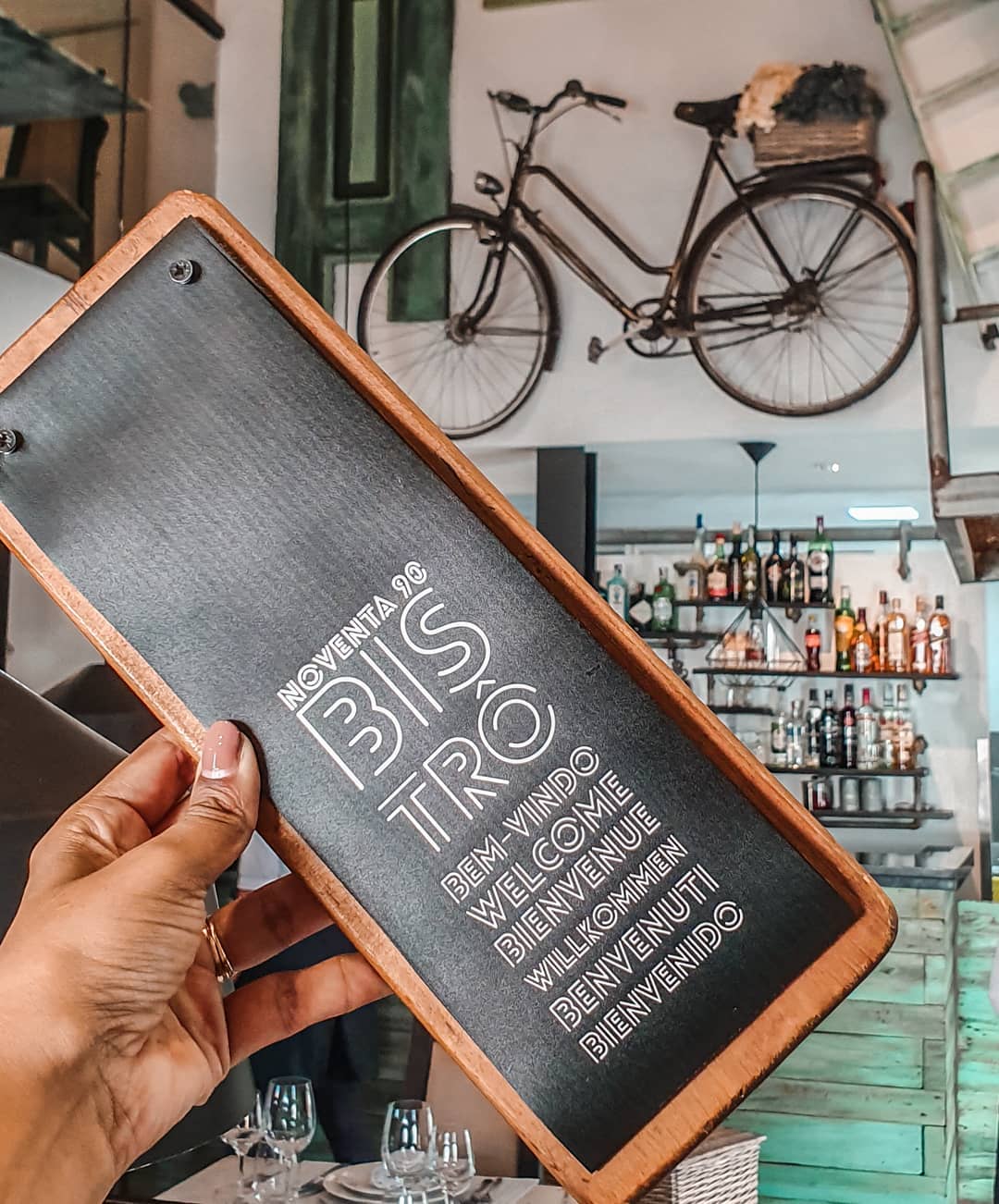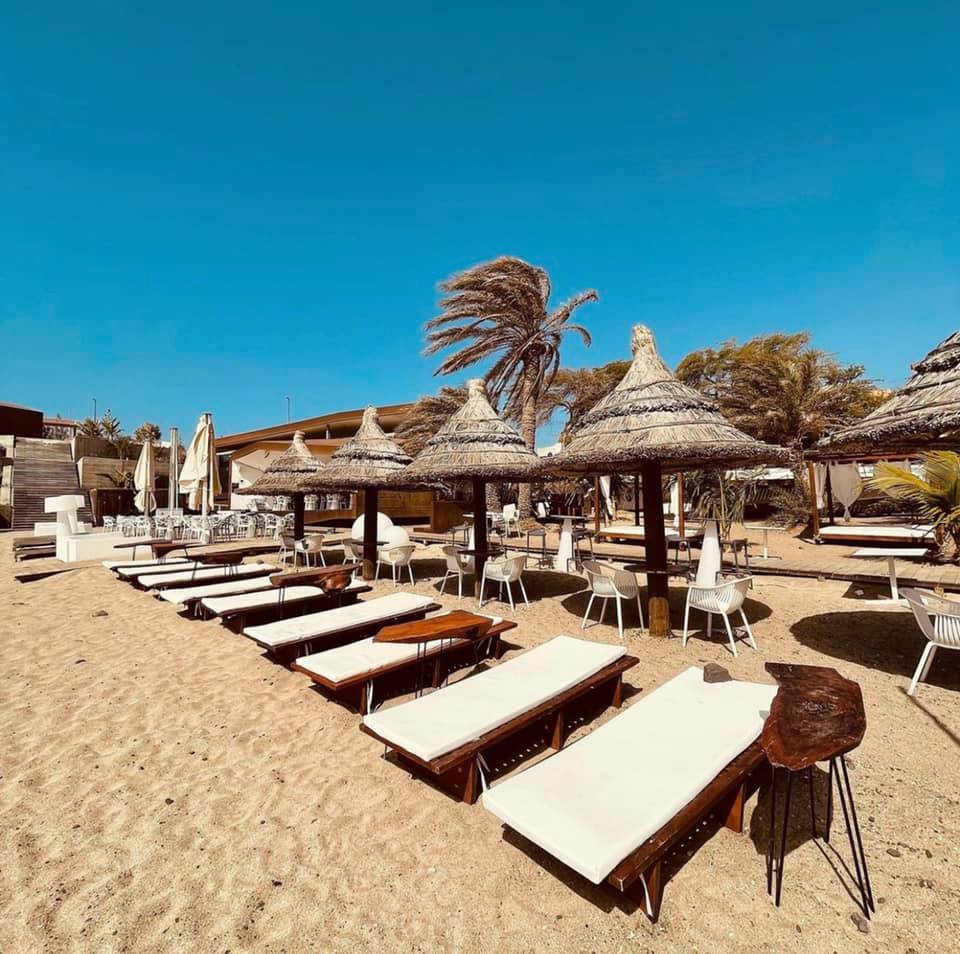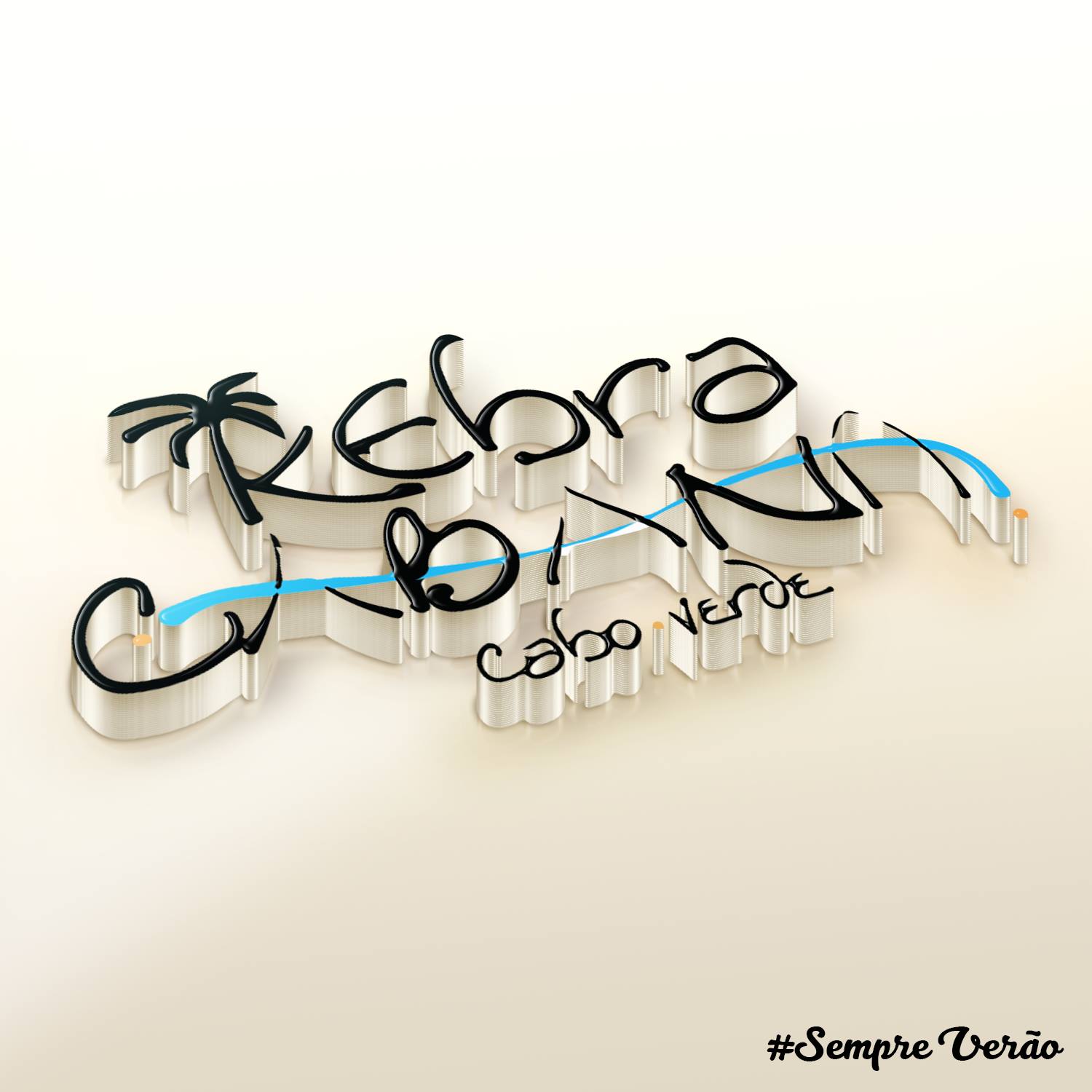Santiago Island
Praia is both the country's capital and its most populous city. The island of Santiago and Praia have experienced extraordinary development since independence in 1975, with the population doubling since that year. One of the oldest settlements is São Domingos, in a valley of the same name in the interior of the island.
The island has the recently expanded (November 2005) Praia International Airport, with a runway 2,100 meters long by 45 meters wide, altitude 70 meters MSL (Mean Sea Level), international code "RAI". Located only 3 km from the city center, the airport receives international flights from Europe (Lisbon, Paris, Amsterdam, Munich), South America (Fortaleza, Brazil), North America (Boston) and the African continent, in addition to domestic flights.
Ribeira Grande de Santiago, formerly Cidade Velha, 15 km west of Praia on the coast, was the first capital of Cape Verde.
About 50 km north of Praia is the town of Assomada with its crowded market and the Tabanka Museum. North of the island, about 75 km from Praia, is the town of Tarrafal, a beach of white sand and palm trees, with some tourist facilities. In the same municipality is the former Tarrafal Camp, created by the Portuguese government of the Estado Novo under Decree-Law no. 26 539, April 23, 1936.
The variant of Cape Verdean Creole spoken in Santiago receives the popular name of badiu, a term also used to designate the native of that island.
Best places to visit in Santiago island
Tourist Information
| Capital. | Official Language | Time Zone | International Telephone Prefix | Currency | Electric Current | Climate and Temperatures | Required Documentation | Medication | Emergency numbers | Opening hours |
|---|---|---|---|---|---|---|---|---|---|---|
| City of Praia | Portuguese | Time Zone | +238 | Cape Verdean Escudo (CVE) | 220 V | - Dry season: December to June, tempered by trade winds. | - Passport. | No vaccination is required upon entry. | Hospital: 130 | General opening hours are from 8 or 9am until 7pm, with most shops closing from noon to 3pm. |
| Creole | GMT:-1 (-2 Spring/Summer) | - Rainy season (aguaceiros): August to October. | Visa: Can be obtained at Cape Verdean consular services or upon arrival. | Preventive medication for diarrhea is recommended. | Fire brigade: 131 | |||||
| Police: 132 | ||||||||||


